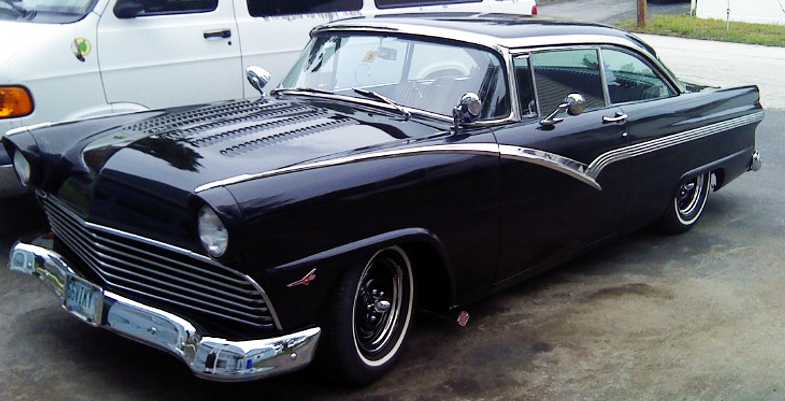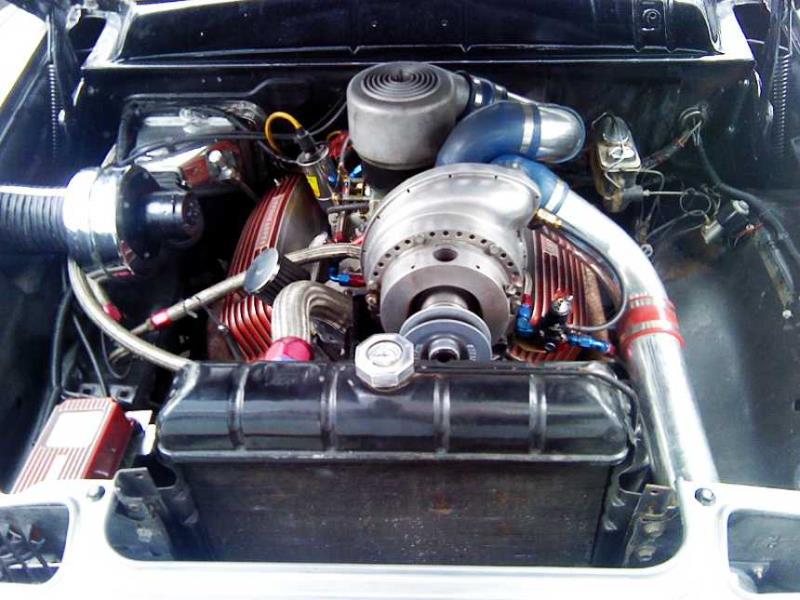|
Author
|
Message
|
|
oldcarmark
|
|
|
Group: Forum Members
Last Active: Yesterday
Posts: 3.7K,
Visits: 32.6K
|
Hello Steve. Driving at 50-60 MPH the gauge is showing about 155 degrees.At slower speeds under 30 or at idle it will sit at 160.You think I should just leave it as is?For summer driving 160 is sufficient?I never checked the stat for temp so it is possible its mispackaged.Maybe I am getting hung up on 180 for nothing.As far as the stat housing I ended up cutting a gasket from 3/16 cork composite and that has worked well.I think the manifold facing must be a little off because the housing I have is new and seems flat.I hate to take it apart again having finally solved the leak.Thanks for your help.
 
|
|
|
|
|
GREENBIRD56
|
|
|
Group: Forum Members
Last Active: Last Year
Posts: 1.7K,
Visits: 102.7K
|
Mark -when I tried to PM you it said your box was full........sorry to hear you are having a problem. Yes, the pointed end of that "Robertshaw" style thermostat aims at the radiator. If you take it apart take a look at the markings on the bronze "pill" that operates the poppet - should be marked with the operational temp. Maybe a miss-marked box? I've got the Mr Gasket #4366 in mine - the 160° version - and I drilled the three 3/16 holes in it like the Stewart Components parts..... http://www.stewartcomponents.com/ When I got my Mr Gasket part I just hit it with the heat gun a few seconds and proved to myself it worked - and started drilling holes. No science about testing the opening temperature - just didn't do it. On the car - I've checked the housing with the infared gun and it apparently opens at 160° just like clockwork. My '56 shop manual says the opening temp is 157° F - so I ordered the 160° version on purpose. The bird runs about 100° over ambient so once the temp drops below 60° F - driving then leaving it to idle results in about 160-170° at the outlet from the engine. I've got a six blade fan on there - and my outfit is running full manifold vacuum on the distributor at idle.

Steve Metzger Tucson, Arizona
|
|
|
|
|
pcmenten
|
|
|
Group: Forum Members
Last Active: 8 Years Ago
Posts: 375,
Visits: 1.1K
|
Over tightening is often the problem with leaks. We've seen carburetors, oil pumps, intake manifolds, and other assemblies with small bolts leak due to over tightening.
I'd smear a layer of Form-a-gasket #2 on the gasket, let it get tacky, assemble finger tight, then carefully torque the bolts.
Best regards,
Paul Menten
Meridian, Idaho
|
|
|
|
|
DANIEL TINDER
|
|
|
Group: Forum Members
Last Active: 2 days ago
Posts: 1.7K,
Visits: 154.2K
|
I understand (?) the military has gone to 100% silicone for motor pool gasket repairs. They bring all parts a tad over finger-tight, and then torque down after the RTV sets. Tightening too soon just squeezes out and thins the gasket material. If mating surfaces are not dead level, you end up with virtually no gasket in some spots.
6 VOLTS/POS. GRD. NW INDIANA
|
|
|
|
|
paul2748
|
|
|
Group: Forum Members
Last Active: Yesterday
Posts: 3.6K,
Visits: 497.8K
|
I've always coated the gasket (both sides) and immediately tightened. Either way would work.
54 Victoria 312; 48 Ford Conv 302, 56 Bird 312
Forever Ford
Midland Park, NJ
|
|
|
|
|
oldcarmark
|
|
|
Group: Forum Members
Last Active: Yesterday
Posts: 3.7K,
Visits: 32.6K
|
Hello Paul,I picked up a tube of the copper silicone.Reading the instructions(always a good idea)it says coat the parts to be assembled and then tighten finger tight until silicone just starts to ooze out.Let sit for an hour and then tighten one to one and a half turns.Would you agree with this or do you assemble and tighten right away?Any tips because hopefully this is the last time it comes apart.
 
|
|
|
|
|
MoonShadow
|
|
|
Group: Forum Members
Last Active: Yesterday
Posts: 4.6K,
Visits: 38.4K
|
Hope that works. I guess if you ever have the manifold off you could hit it on a belt grinder to smooth it a bit. Silicone does wonders though! Hope you get it cured! I know I'll start a discussion but for a small seepage a little stop leak in the radiator may work. Just don't use much as it can restrict passages in the radiator. I've also had luck in an emergency using coarse ground pepper to seal up a leak. Chuck in NH
Y's guys rule!
Looking for McCullouch VS57 brackets and parts. Also looking for 28 Chrysler series 72 parts. And early Hemi parts.
 
MoonShadow, 292 w/McCulloch, 28 Chrysler Roadster, 354 Hemi)
Manchester, New Hampshire
|
|
|
|
|
oldcarmark
|
|
|
Group: Forum Members
Last Active: Yesterday
Posts: 3.7K,
Visits: 32.6K
|
Thanks Chuck.The housing is flat.My problem is the machined area on the manifold is not uniform width around the area above the stat opening in manifold.It almost looks like someone pried around that part to maybe get a housing off and chipped a piece of the machined area.Now its thin and hard to get it to seal.I am going to try the copper silicone.Thanks for everyones help.
 
|
|
|
|
|
MoonShadow
|
|
|
Group: Forum Members
Last Active: Yesterday
Posts: 4.6K,
Visits: 38.4K
|
I have used a belt grinder to level the surface of the housing a bit. Mainly you just want to make a pass on the sander and see if all is flush! Don't take off much or it will get too thin. Chuck in NH
Y's guys rule!
Looking for McCullouch VS57 brackets and parts. Also looking for 28 Chrysler series 72 parts. And early Hemi parts.
 
MoonShadow, 292 w/McCulloch, 28 Chrysler Roadster, 354 Hemi)
Manchester, New Hampshire
|
|
|
|
|
oldcarmark
|
|
|
Group: Forum Members
Last Active: Yesterday
Posts: 3.7K,
Visits: 32.6K
|
Hi Paul,Thanks for the suggestion.Judging by your answer this sounds like this is not an uncommon problem with these motors?
 
|
|
|
|